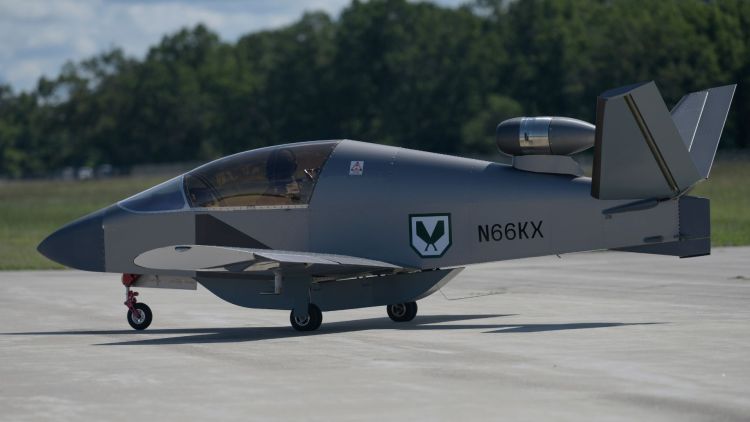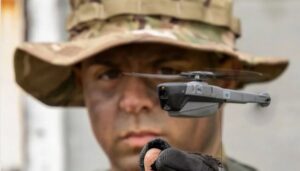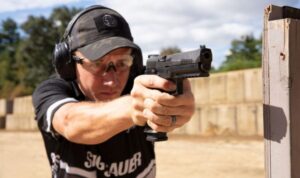In a groundbreaking tactical shift, the US military is leveraging a fleet of diminutive jets to simulate the escalating threat of drones and cruise missiles.
And no, the irony of that isn’t lost on us here at SOFREP. Manned aircraft mimicking the activity of drones that themselves were developed to eliminate the need for a human in the cockpit.
Exercise Northern Strike 24-2 became a proving ground for JSX-2 microjets last week as they take to the skies to mimic the behavior of these modern-day aerial menaces.
Microjets Take Flight in Northern Strike
The US Air National Guard has recently unveiled a glimpse into the future of aerial warfare training.
Two JSX-2 microjets, bearing the distinct registrations N55KX and N66KX, have been deployed at the Alpena Combat Readiness Training Center in Michigan as part of the ongoing Exercise Northern Strike 24-2.
Overseen by the Michigan National Guard’s National All-Domain Warfighting Center, this large-scale exercise is providing a critical platform for testing and refining tactics against emerging aerial threats.
Exercise Northern Strike 24-2 kicked off on August 3 and will conclude on August 17. It is one of the Pentagon’s largest reserve component readiness exercises, with “over 6,300 participants from 32 states and territories and five international participants,” according to a Michigan National Guard press release.
“This year’s summer iteration of the annual exercise will incorporate training scenarios involving homeland security and defense against unmanned aerial systems,” Michigan National Guard noted on this year’s training exercise objective.
The Rising Threat and a Novel Solution
The rapid evolution of drone technology has posed unprecedented challenges to national security. These unmanned aerial vehicles (UAVs), with their increasing sophistication and potential for carrying lethal payloads, have necessitated a drastic overhaul in military training and tactics.
Two KestrelX JSX-2 microjets taxi during Exercise Northern Strike 2024-2. (DVIDS)
The JSX-2 microjet, a compact aircraft traditionally used for civilian flight, has been repurposed to fill a critical gap in training simulations. It is also the production variant of Sonex Aircraft’s experimental SubSonex jet.
Building on the foundation of the JSX-1 introduced in 2009, the JSX-2 made its debut in 2011 with significant upgrades.
Notable enhancements include a fully retractable landing gear, improving the aircraft’s aerodynamics. For added safety, a rocket-deployed parachute system is integrated. Both the JSX-1 and JSX-2 have been commercially available as build-your-own kits.
Sonex Aircraft’s current model, marketed as the SubSonex Personal Jet, boasts a cruising speed of 230-240 mph (370-386 km/h) and a range of 410 miles (660 kilometers).
KestrelX, a private company, is operating the JSX-2 microjets during Exercise Northern Strike 24-2.
The firm secured a $725,000 contract from the US Air Force in 2021 under the Small Business Innovation Research (SBIR) program. This government initiative supports innovative projects by smaller companies and, in this case, has funded KestrelX’s development of UAV and cruise missile threat replication aircraft.
Microjets: A Cost-Effective and Adaptable Training Solution
By employing these microjets as surrogate targets, military personnel are gaining invaluable experience in detecting, tracking, and neutralizing potential threats.
Unlike larger, more expensive drones, the JSX-2 offers unparalleled flexibility. With a skilled pilot at the helm, these microjets can replicate the erratic flight patterns, speed, and altitude of real-world drones and cruise missiles, providing a more realistic training environment.
Retired US Navy Lt. Cmdr West McCall pilots a KestrelX JSX-2 microjet during Exercise Northern Strike 2024-2. (DVIDS)
Moreover, the cost-effectiveness of using microjets for training is a significant advantage.
Compared to the high acquisition and maintenance costs of drones, the JSX-2 offers a more sustainable solution.
These small aircraft can be reused multiple times, reducing operational expenses and environmental impact.
Sharpening the Edge: Microjet-Based Threat Training
While the military has previously employed larger aircraft to simulate cruise missiles, the JSX-2’s smaller size and maneuverability make it ideally suited for replicating the characteristics of drones.
By mastering the challenges posed by these microjets, military personnel are developing the critical skills needed to counter the complex and evolving threats posed by UAVs and cruise missiles.
The integration of JSX-2 microjets into training exercises marks a significant step forward in the military’s efforts to stay ahead of emerging threats.
—
Disclaimer: SOFREP utilizes AI for image generation and article research. Occasionally, it’s like handing a chimpanzee the keys to your liquor cabinet. It’s not always perfect and if a mistake is made, we own up to it full stop. In a world where information comes at us in tidal waves, it is an important tool that helps us sift through the brass for live rounds.



